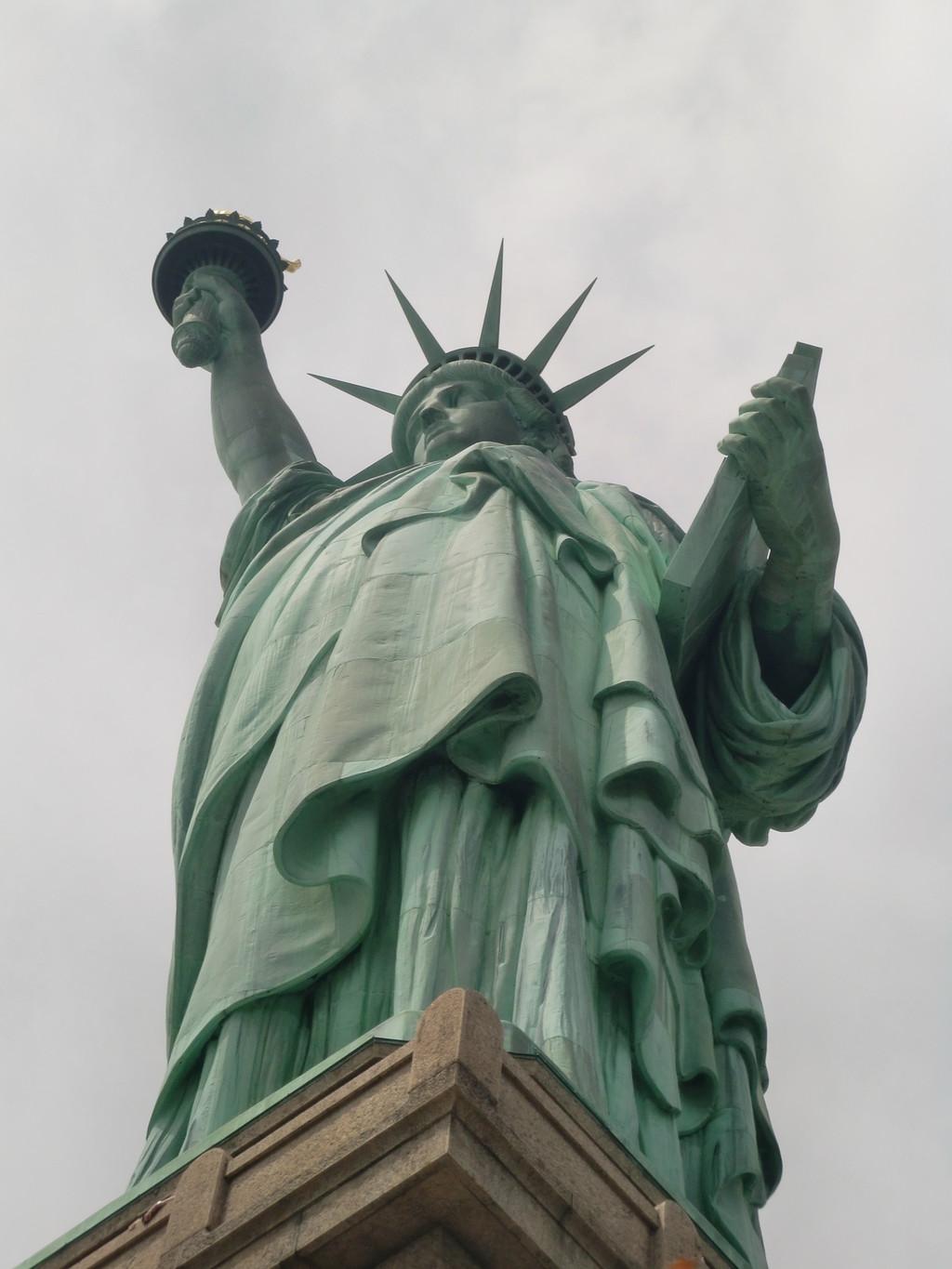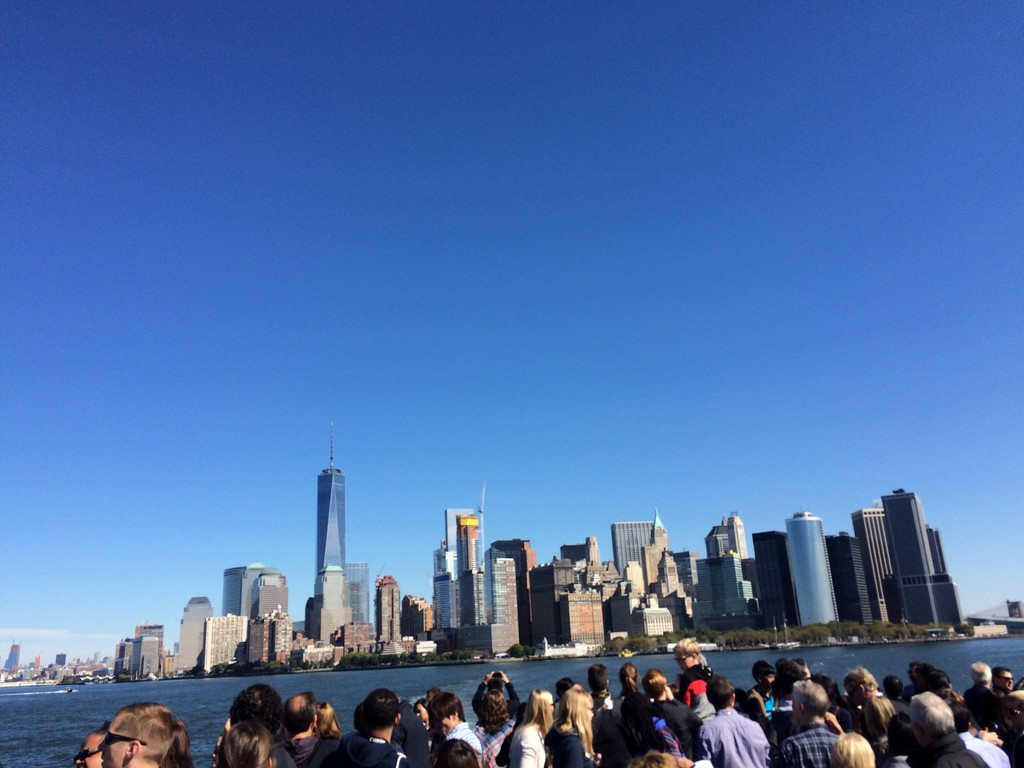Liberty Island
- Address: Liberty Island, New York, NY 10004
- Tags:
 What to see New York,
New York,
United States
What to see New York,
New York,
United States
- Telephone: +1 212-363-32
- Website: www.nps.gov/stli/index.htm
The Statue of Liberty

The Statue of Liberty is one of the most obviously well-known and beloved monuments in America. The statue is strategically placed to welcome immigrants arriving in New York harbour, and to welcome homecoming residents back to their country. It has become a lasting symbol of freedom all over the globe. The statue was a gift given to the United States by France as a symbol of friendship between the two countries: France supported the United States during the revolutionary wars. The two countries shared similar points of views and political situations in 1865, and it was this which lead to Edouard Laboulaye René designing a monument to symbolise the friendship between the two countries.
The Statue of Liberty was dedicated in 1886. Over the years, the Statue of Liberty has come to symbolise the foundations of freedom and democracy the United States is built upon.
Frederic Auguste Bartholdi was commissioned to design the statue before a finishing date of 1876, to celebrate the centenary of the American Declaration of Independence. The statue was the result of the joint efforts of the United States and France, with France constructing and designing the posture and figure itself, and the United States completing the supporting pedestal. Bartholdi needed the help of an engineer to address the structural problems of the sculpture's design, similar to Alexandre Gustave Eiffel, the designer behind the Eiffel Tower. These problems were resolved, and the statue would stand firm because of this.

Funds to build the Statue of Liberty were hard to obtain for both countries. In France, entertainment, public prices and a national lottery would help to raise the money needed. In the United States, things progressed much slower. Auctions, diverse entertainment events and arguments provided some funding. Joseph Pulitzer decided that it was necessary to obtain public interest in and focus on the statue to raise the sum needed, and published an appeal to the upper and middle classes to help finance this important icon of the United States as the leading article in his newspaper. The funds were finally raised for the pedestal at the end of August 1885, and construction work on the building finished in 1886. In France, the statue was finished in 1884, and arrived in New York habrour in 1885 aboard the French ship 'Isere'.
The statue was divided in 350 individual parts which were then placed in 214 crates to transport it to the United States. On October 28th 1886, the dedication of the Statue of Liberty took place, ten years after the 1876 centenary. The statue was placed on the granite pedestal atop a star-shaped base.

Until 1901, the USA Lighthouse Committee was responsible for the Statue of Liberty. In 1901, the War Department took control of the statue. On October 15th 1924, a presidential announcement proclaimed Fort Hood and the Statue of Liberty national monuments. The national monument caught the attention of the National Parks Department in 1933, and a few years later, the jurisdiction of the monument included the whole of Bedloe Island. The island's name was changed to Liberty Island in 1956.
President Ronald Reagan announced his intention to restore the Statue of Liberty in 1982. The total funds needed for a year's restauration works would be $87 million dollars. In 1984, the United Nations declared the Statue of Liberty a World Heritage Site, and the restauration works finished on July 5th 1986, when the statue also celebrated its centenary,
The Statue of Liberty was closed following the terrorist attacks on September 11th 2001. The monument remained closed until August 2004. Today, visitors have access to the observation platform inside the pedestal and inside the statue itself, to the maritime promenade, and to Fort Hood and Ellis Island. The poem 'The New Colossus' by Emma Lazarus was written about the Statue of Liberty, and a bronze plaque with the words of the poem inscribed on it was installed in 1903, twenty years after the poem's composition.

Legends surrounding the statue
According to a study financed by the National Parks Department, 'the majority of the Black Statue of Liberty rumors refer to a model owned by the Museum of the City of New York as proof that the original model for the statue was a black woman'. While many believe that the concept for the statue came from a huge statue known to have stood in Ancient Egypt, and that the women who posed for the designers were black Egyptians, the study confirmed that there was no evidence to believe that the designers had any intention of representing freedom in the form of a black woman.
The statue's creator, Frederic Auguste Bartholdi, was a strong opposer of the slave trade. The study affirms however that the statue was not intended entirely to be a monument to the abolition of slavery. This being so, the presence of chains at the statue's feet combined with the ideal of a black model has provoked interesting debate.

Photo gallery
Content available in other languages
- Español: La Estatua de la Libertad
- Deutsch: Die Freiheitsstatue
Rate and comment about this place!
Do you know Liberty Island? Share your opinion about this place.





























